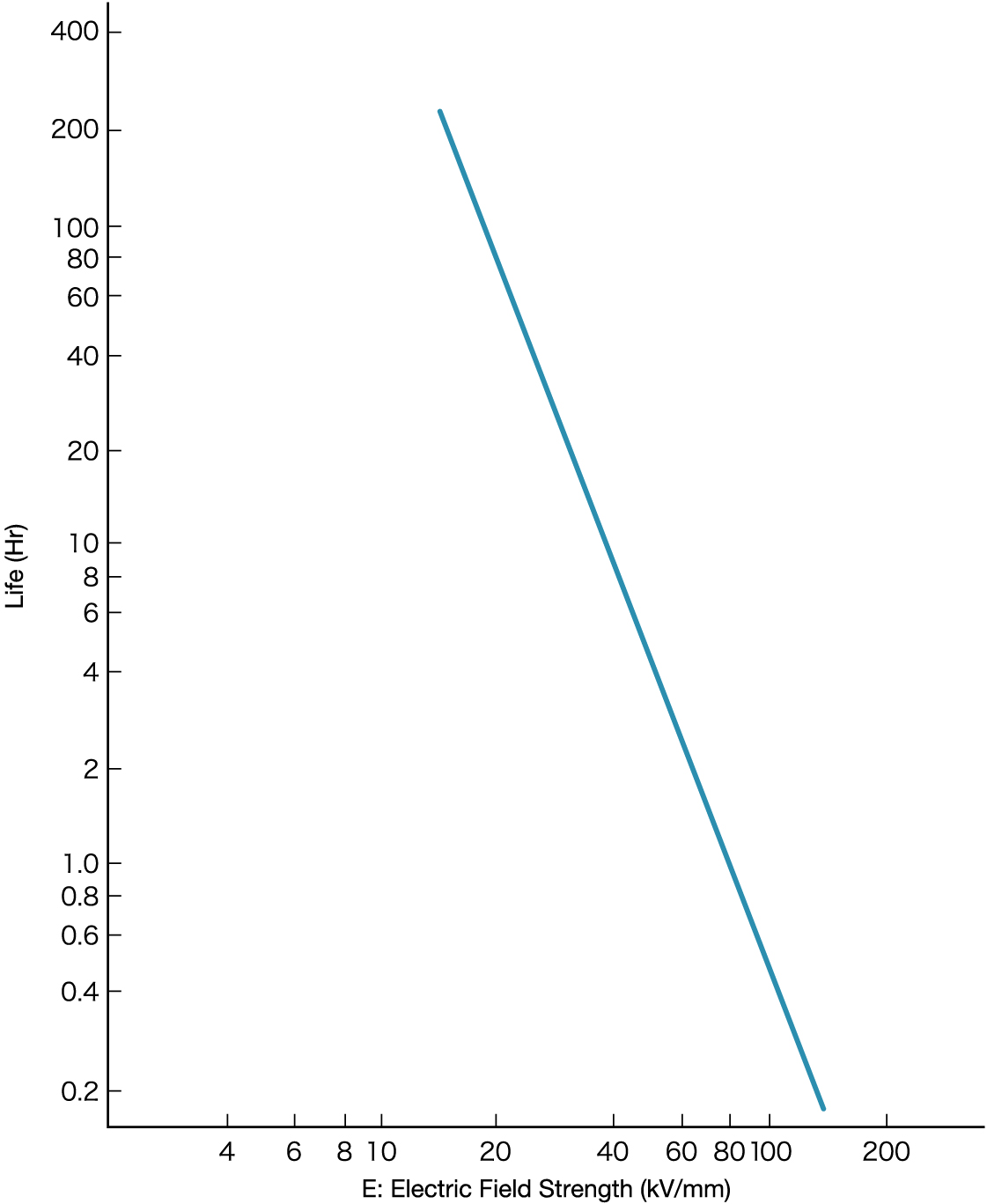Electrical Properties
1. Dielectric Breakdown Strength for Various Product Numbers
Lumirror™ has an extremely high dielectric breakdown strength.
Fig. 1 shows the breakdown voltage for various Lumirror™ product numbers measured at a frequency of 60 Hz.
The measurement method was JIS C 2318-72 with the test performed at 20°C.
Fig. 1 shows the breakdown voltage for each unit thickness, while the dielectric breakdown strength is shown in Fig. 2.
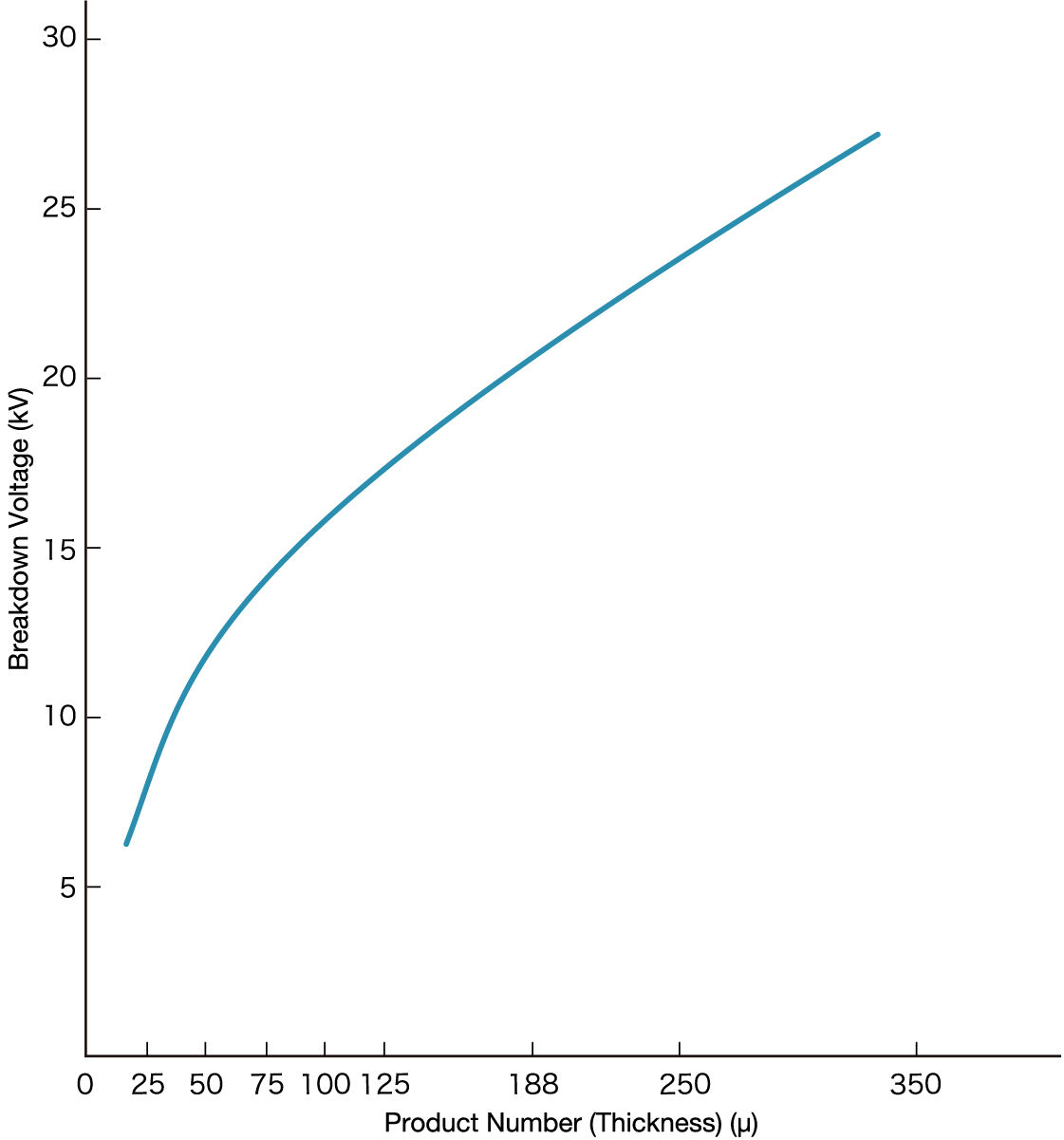
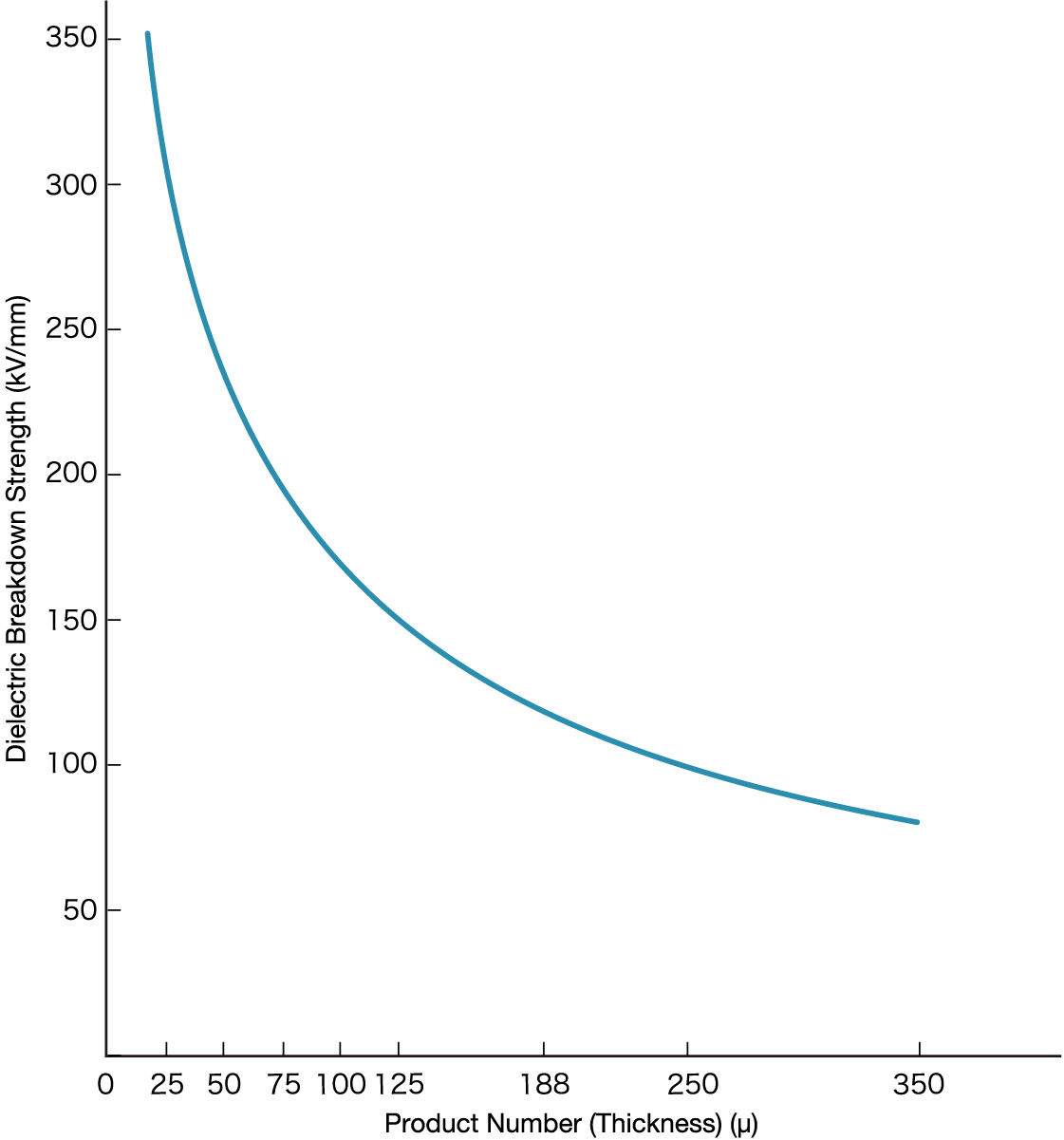
2. Change in Dielectric Breakdown Strength Based on Temperature
Up to approx. 100°C, the dielectric breakdown strength of Lumirror™ hardly changes. Even at 150°C, it still maintains 90% of its performance at room temperature.
Fig. 3 shows the changes in #25 (25 μ) and #50 (50 μ) Lumirror™ dielectric breakdown strength based on temperature.
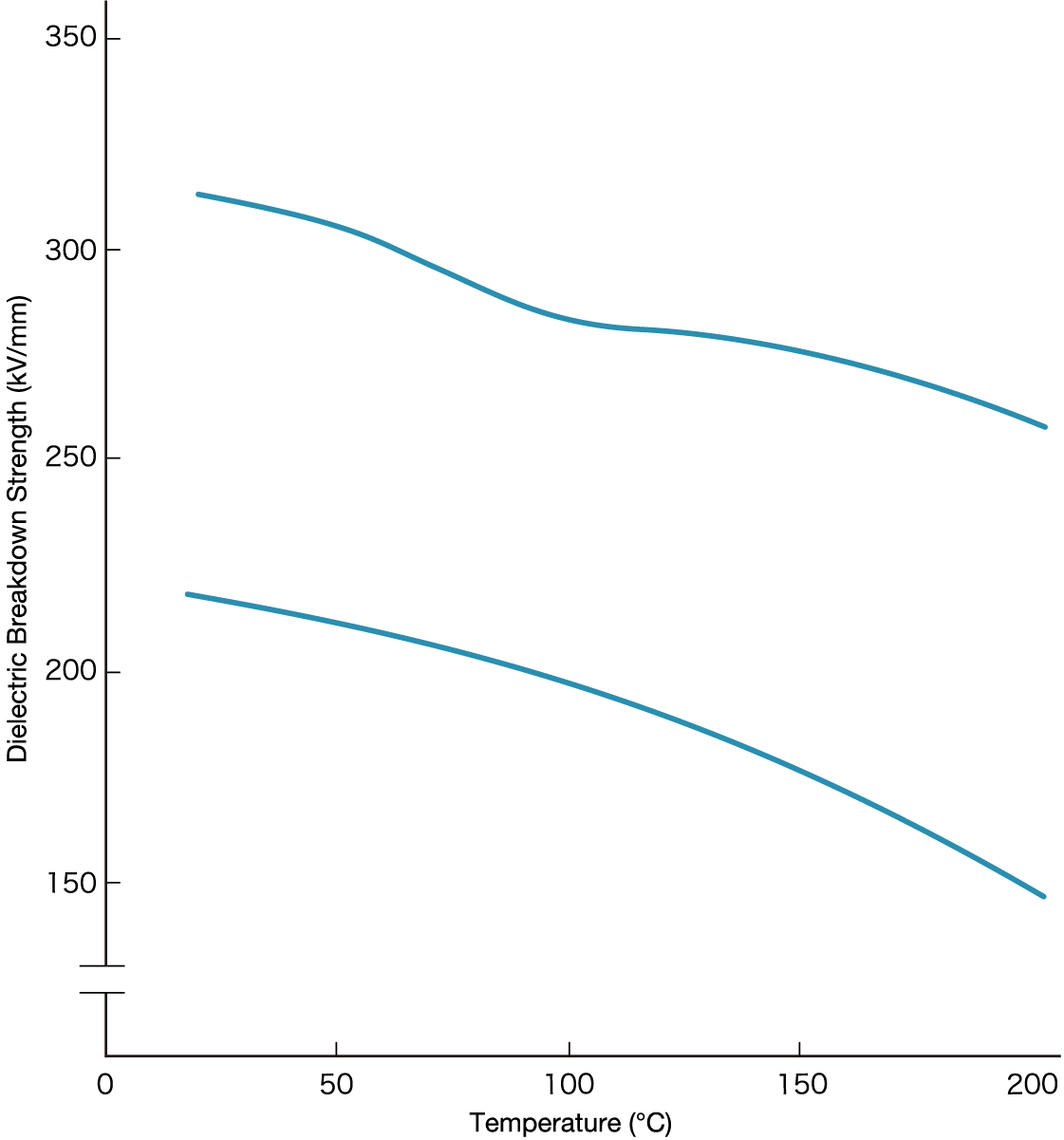
3. Change in Dielectric Breakdown Strength Based on Humidity
Up to approx. 50% RH, the dielectric breakdown strength of Lumirror™ hardly changes. Even at 100% RH, it still maintains 80% of its performance at normal humidity.
Fig. 4 shows the changes in #50 (50 μ) Lumirror™ dielectric breakdown strength at 20°C and 40°C based on humidity.
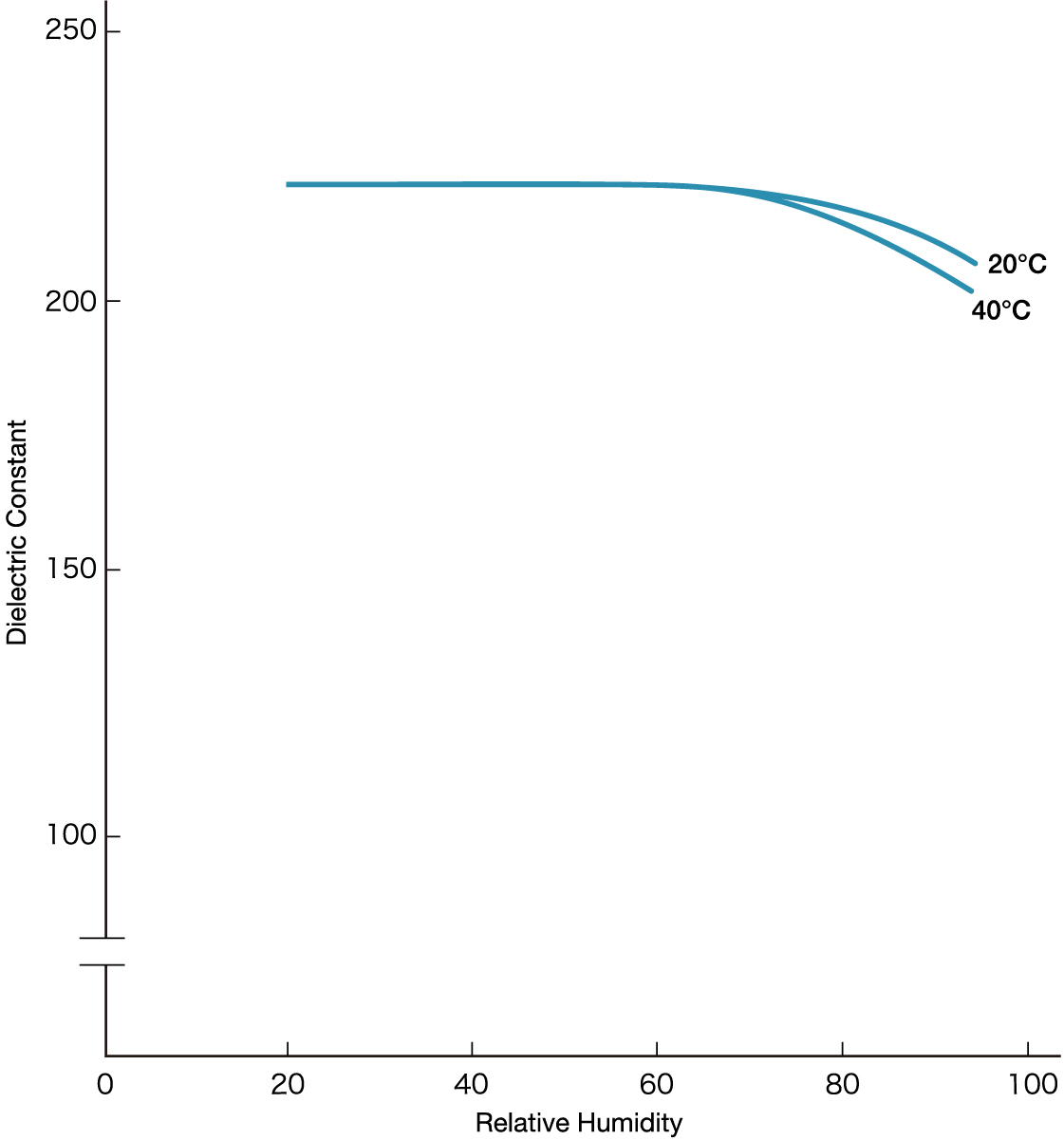
4. Change in Dielectric Constant Based on Frequency
Fig. 5 shows the change in dielectric constant for #25 (25 μ) Lumirror™ at various temperatures based on frequency.
The measurement method is JIS C 2318-72.
It should be noted that any product number (thickness) of Lumirror™ displays almost the same dielectric constant.
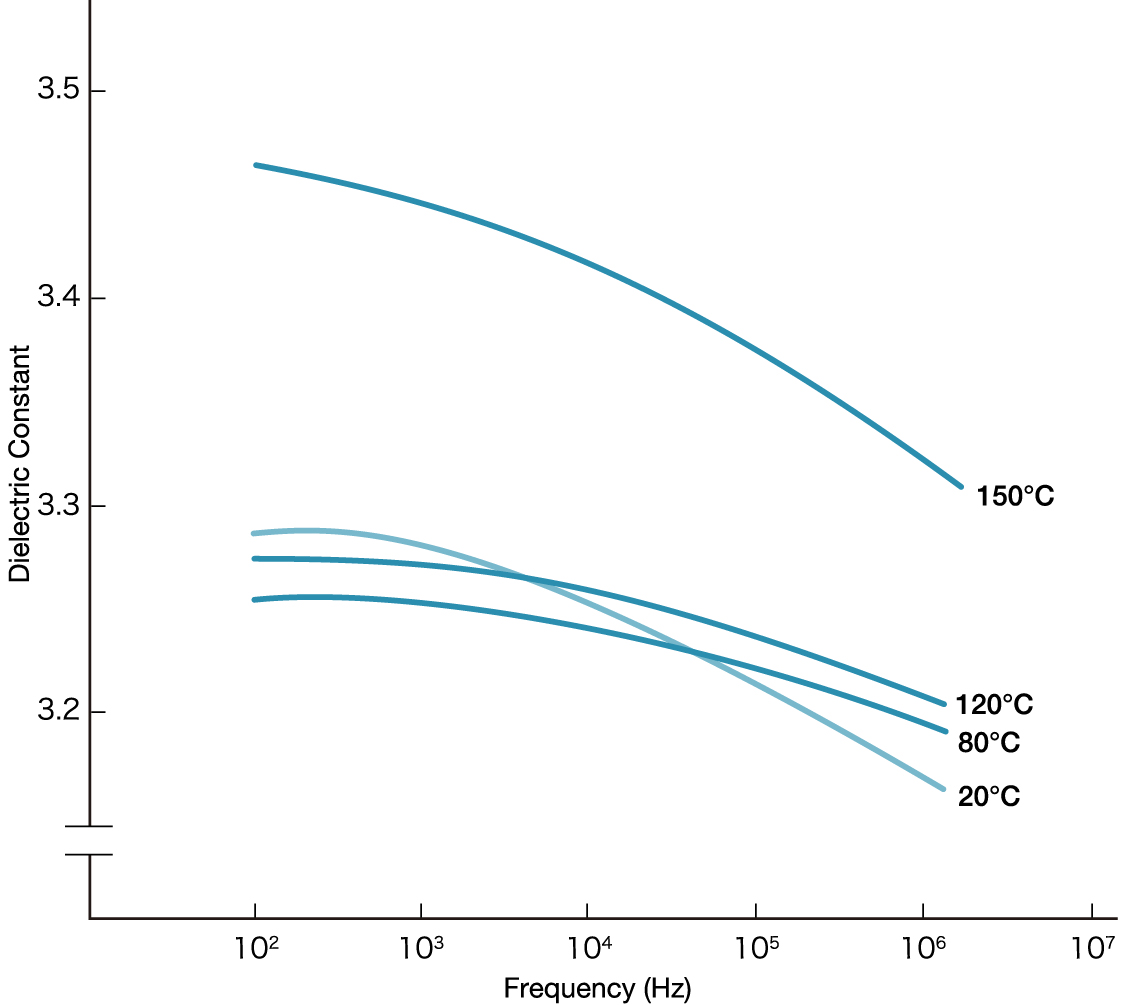
5. Change in Dielectric Constant Based on Temperature
Fig. 6 shows the change in dielectric constant for #25 (25 μ) Lumirror™ at 1 KHz based on temperature.
The measurement method is JIS C 2318-72.
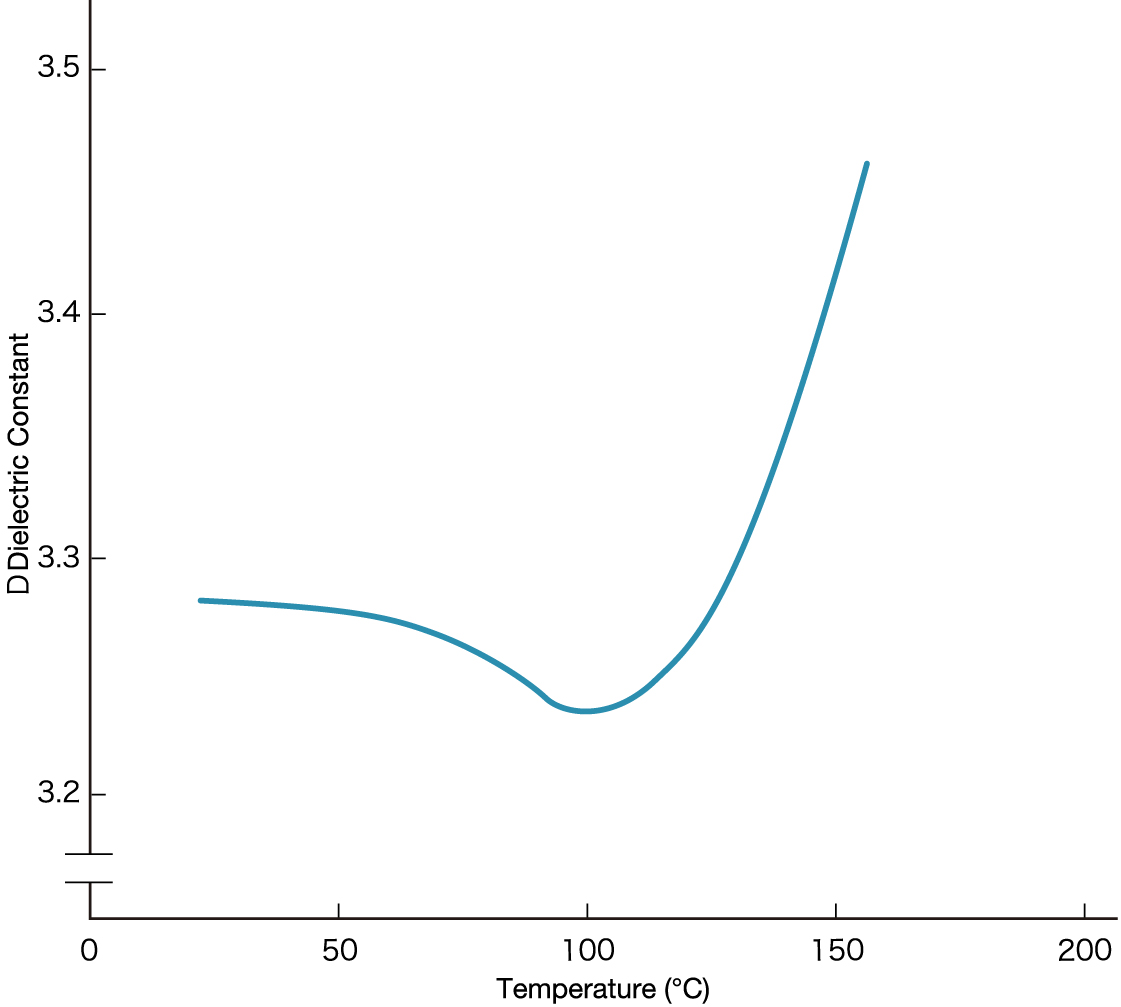
6. Change in Dissipation Factor Based on Frequency
Fig. 7 shows the change in dissipation factor for #25 (25 μ) Lumirror™ at various temperatures based on frequency.
The measurement method is JIS C 2318-72.
It should be noted that any product number (thickness) of Lumirror™ displays almost the same dissipation factor.
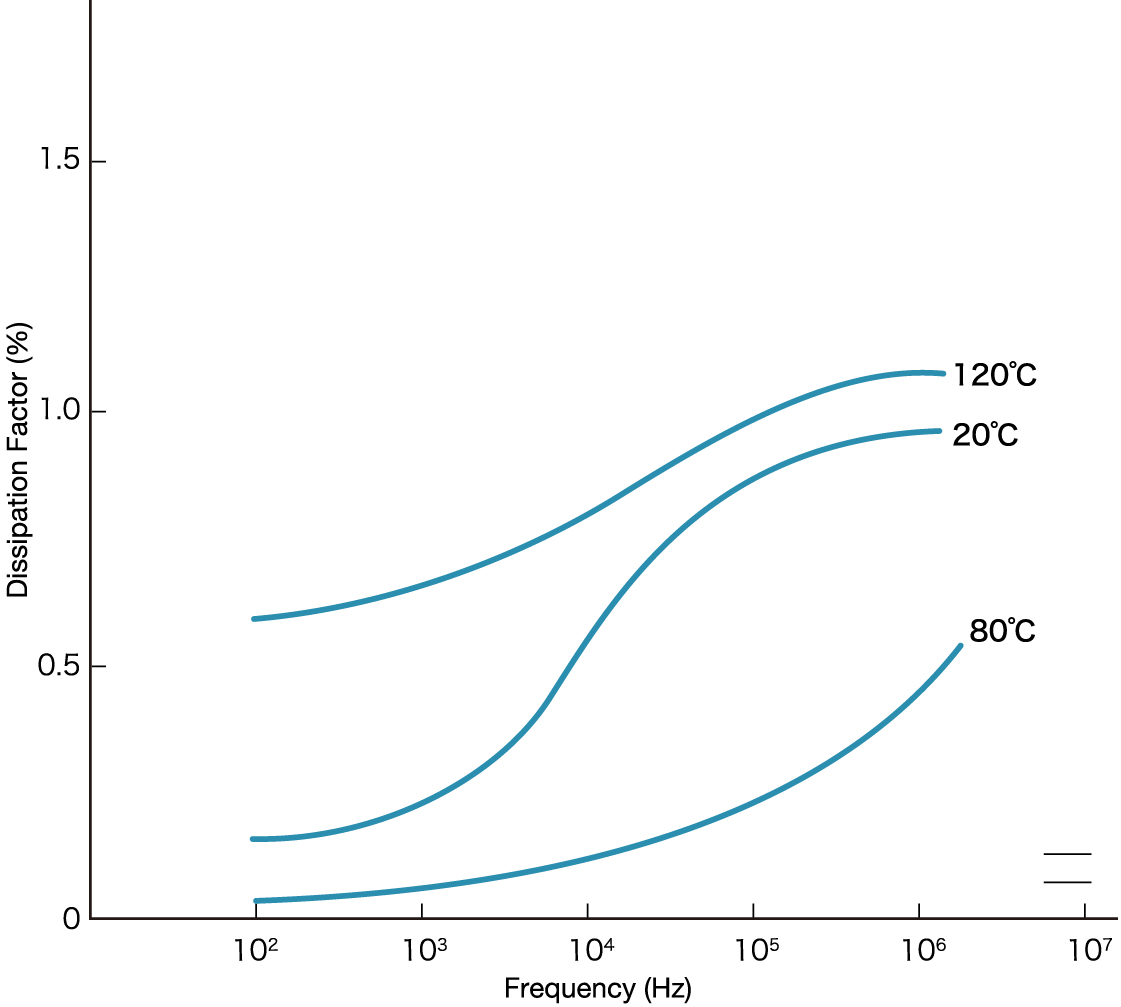
7. Change in Dissipation Factor Based on Temperature
Fig. 8 shows the change in dissipation factor for #25 (25 μ) Lumirror™ at 1 KHz based on temperature.
The measurement method is JIS C 2318-72.
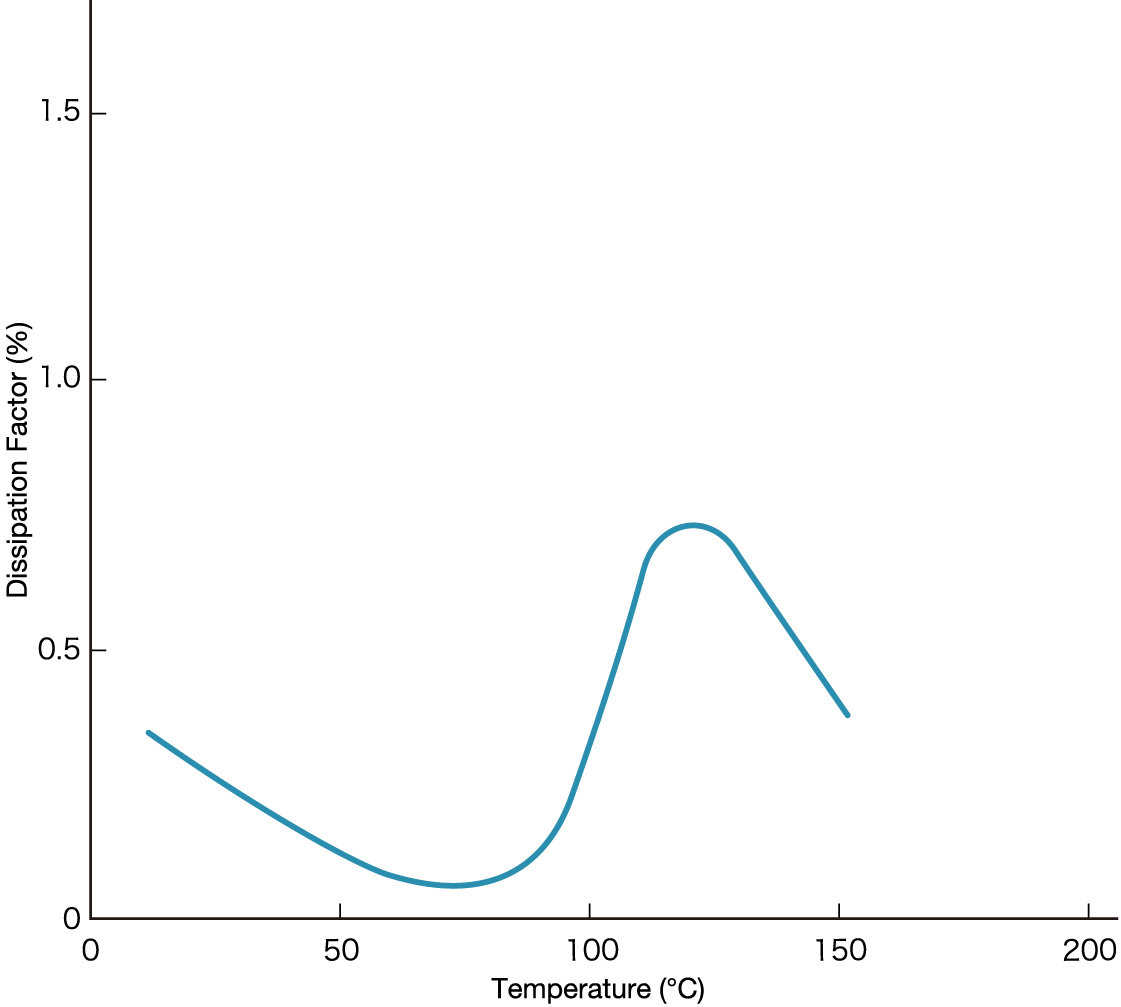
8. Change in Volume Resistivity Based on Temperature
Fig. 9 shows the change in #25 (25 μ) and #50 (50 μ) Lumirror™ volume resistivity based on temperature. The measurement method is JIS C 2318-72.
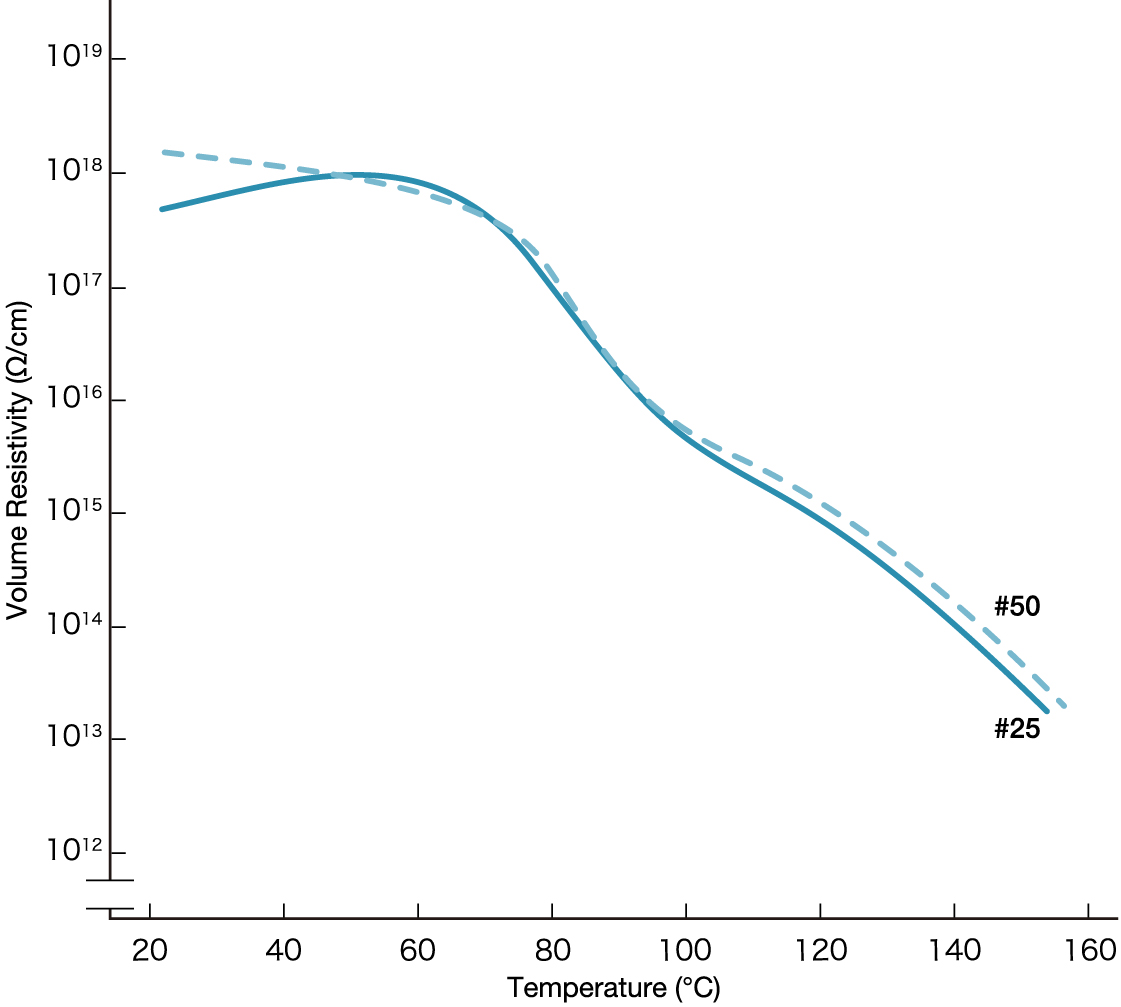
9. Change in Surface Resistivity Based on Temperature
Fig. 10 shows the change in #25 (25 μ) and #50 (50 μ) Lumirror™ surface resistivity based on temperature.
The measurement method is ASTM D 257-66.
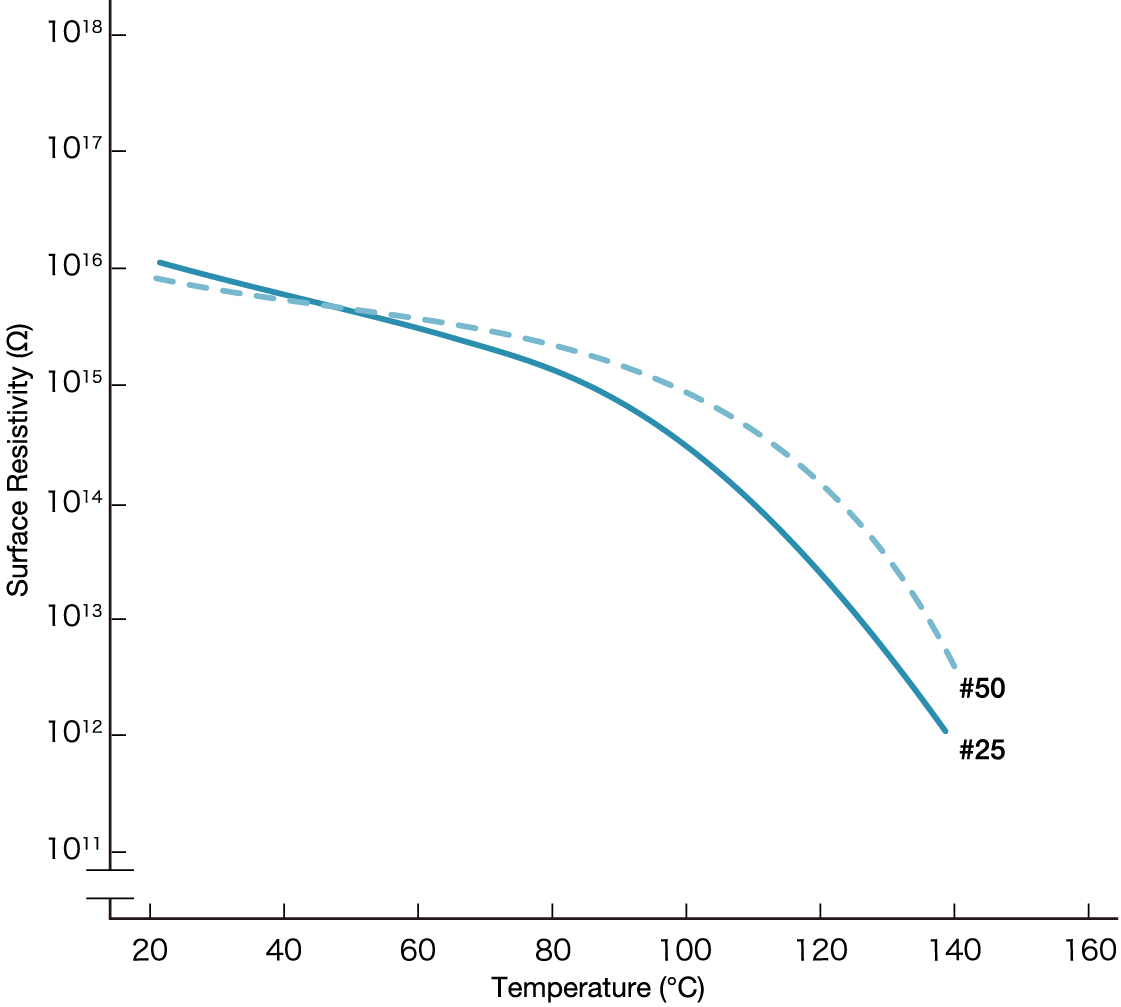
10. Corona Discharge Voltage for Various Product Numbers
Fig. 11 shows the corona discharge inception voltage and discharge extinction voltage for various Lumirror™ product numbers.
Figures 12 and 13 show the measurement circuit and measurement electrodes.
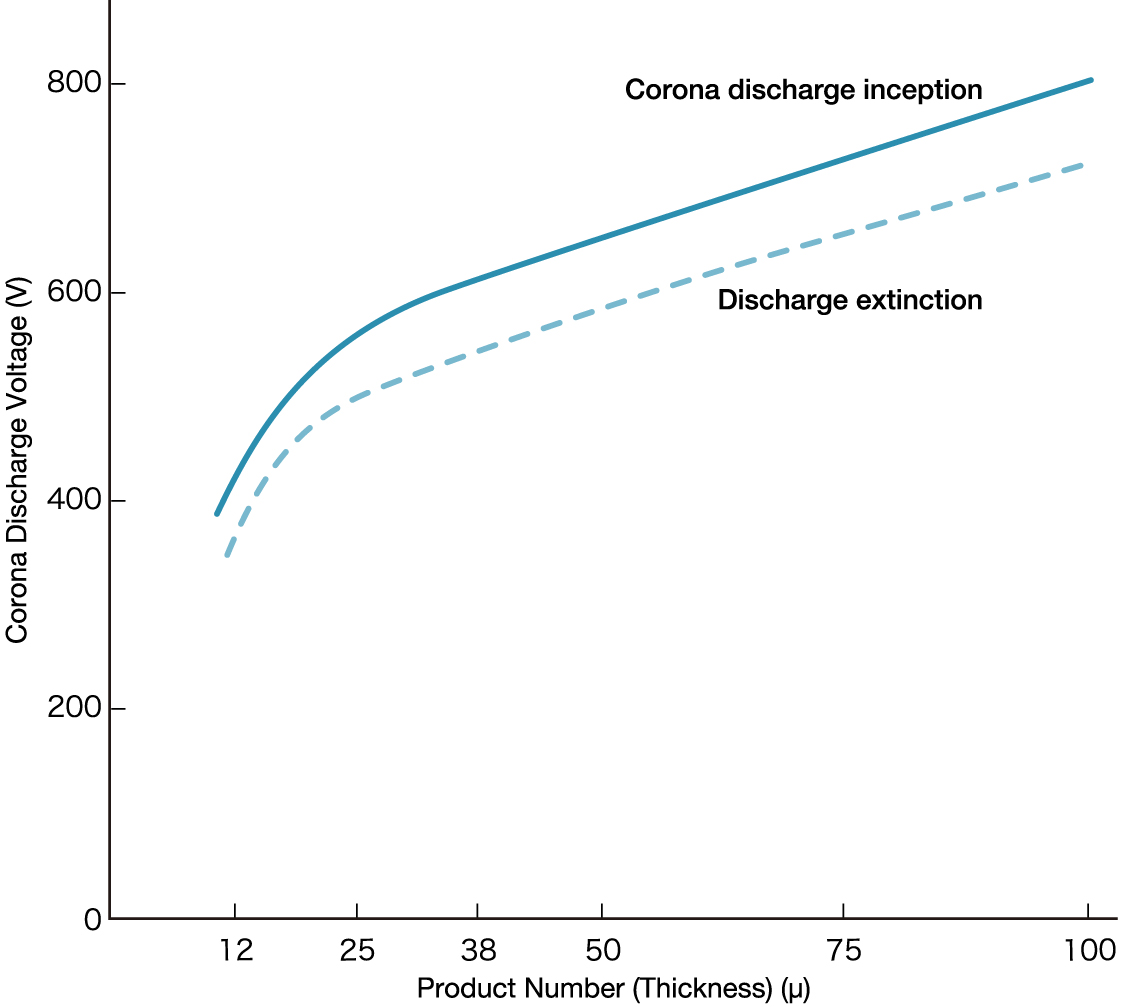
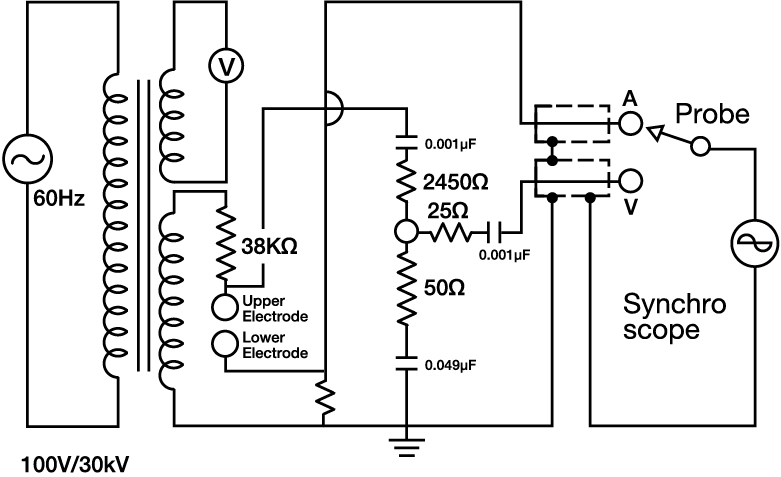
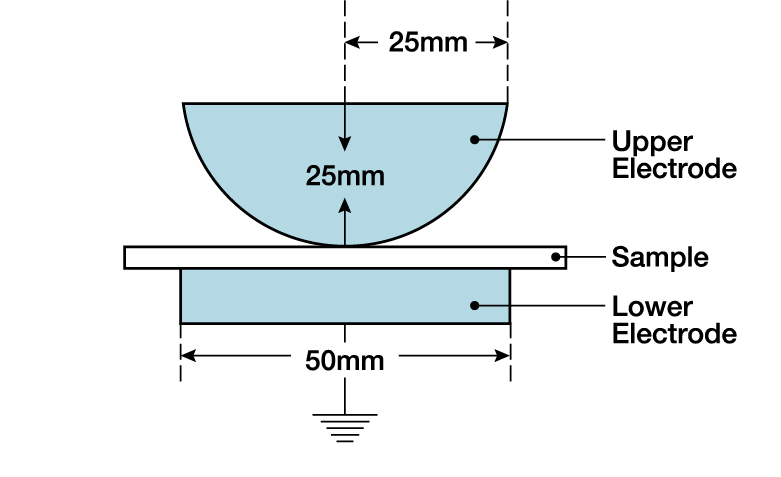
11. Corona Resistant Life
Fig. 14 shows the time taken for Lumirror™ to undergo dielectric breakdown due to corona discharge generated at a frequency of 60 Hz, or in other words, the change in corona resistant life based on electric field strength.
The thickness of the samples measured were #50 (50 μ) and #75 (75 μ), and the measurement method was the IEC (15B) Electrode Method.
